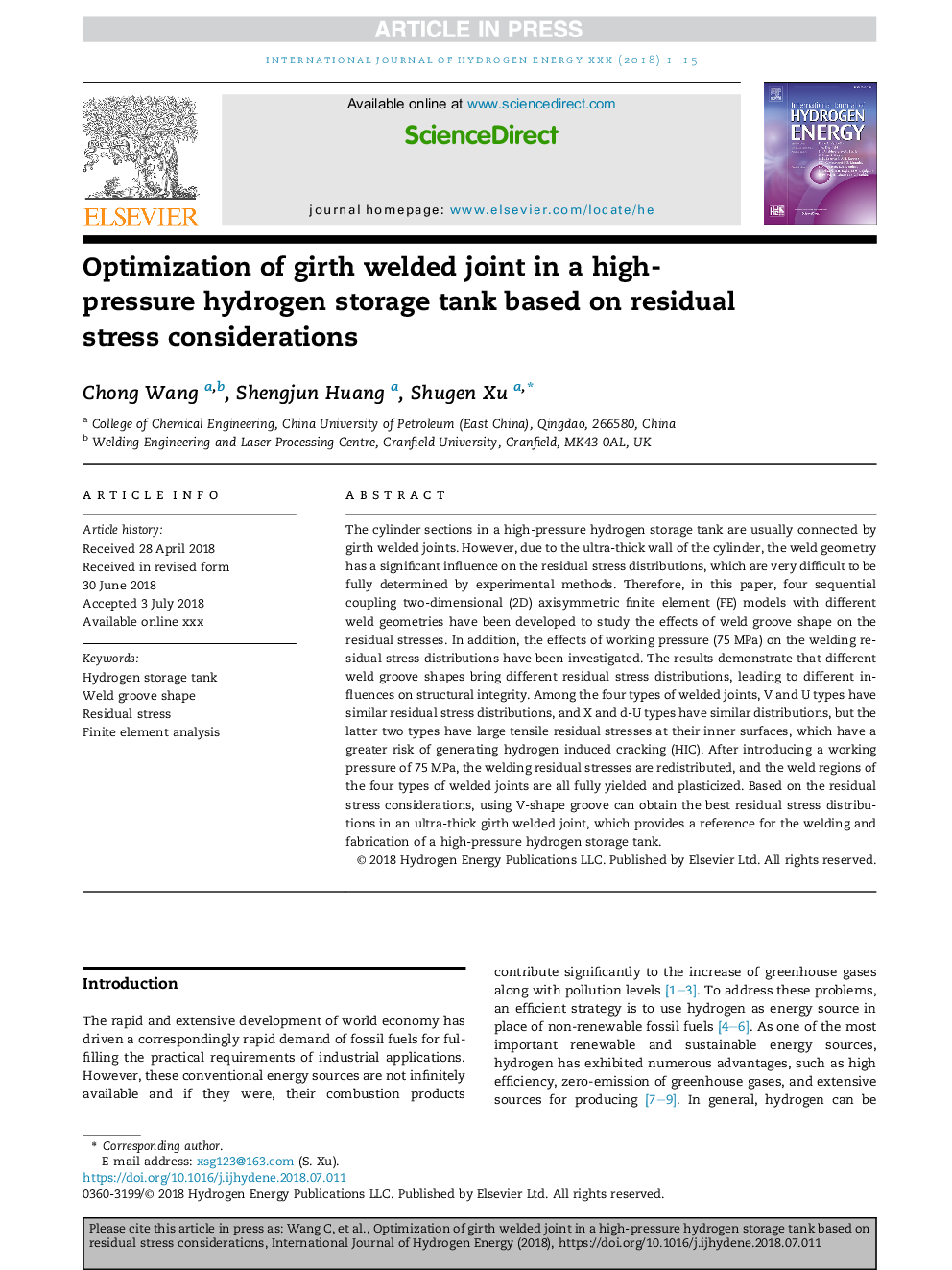| Article ID | Journal | Published Year | Pages | File Type |
|---|---|---|---|---|
| 8961301 | International Journal of Hydrogen Energy | 2018 | 15 Pages |
Abstract
The cylinder sections in a high-pressure hydrogen storage tank are usually connected by girth welded joints. However, due to the ultra-thick wall of the cylinder, the weld geometry has a significant influence on the residual stress distributions, which are very difficult to be fully determined by experimental methods. Therefore, in this paper, four sequential coupling two-dimensional (2D) axisymmetric finite element (FE) models with different weld geometries have been developed to study the effects of weld groove shape on the residual stresses. In addition, the effects of working pressure (75Â MPa) on the welding residual stress distributions have been investigated. The results demonstrate that different weld groove shapes bring different residual stress distributions, leading to different influences on structural integrity. Among the four types of welded joints, V and U types have similar residual stress distributions, and X and d-U types have similar distributions, but the latter two types have large tensile residual stresses at their inner surfaces, which have a greater risk of generating hydrogen induced cracking (HIC). After introducing a working pressure of 75Â MPa, the welding residual stresses are redistributed, and the weld regions of the four types of welded joints are all fully yielded and plasticized. Based on the residual stress considerations, using V-shape groove can obtain the best residual stress distributions in an ultra-thick girth welded joint, which provides a reference for the welding and fabrication of a high-pressure hydrogen storage tank.
Related Topics
Physical Sciences and Engineering
Chemistry
Electrochemistry
Authors
Chong Wang, Shengjun Huang, Shugen Xu,
